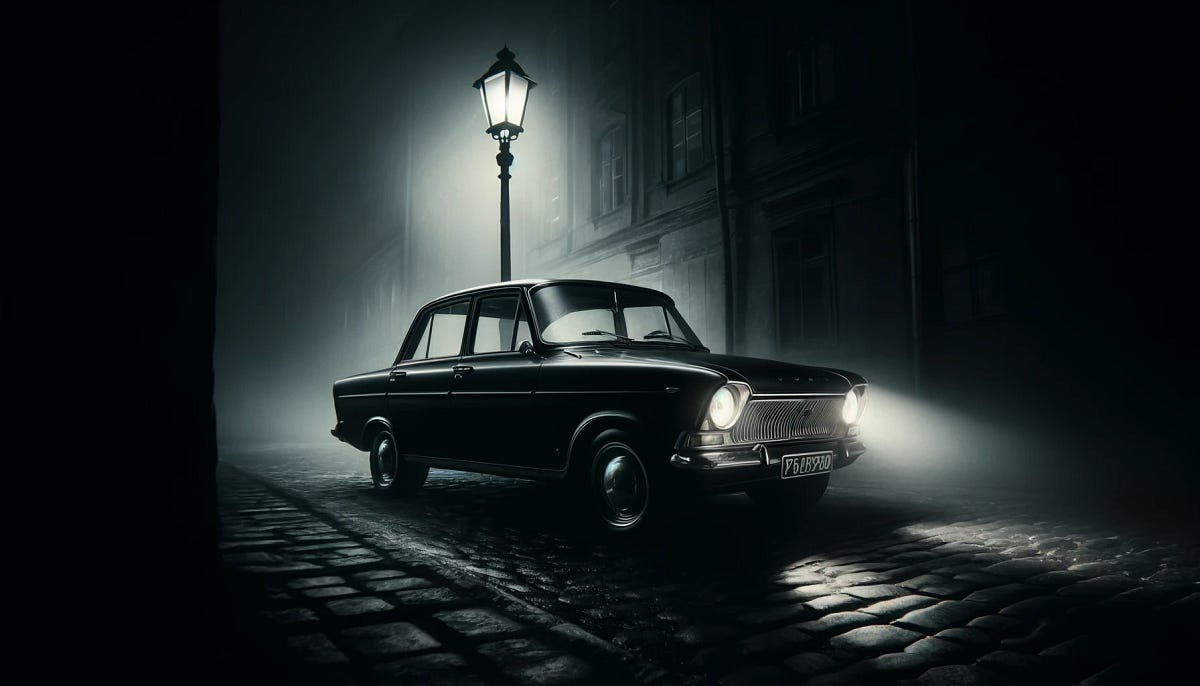
when Horror Yearbook – The Black Volga is a vehicle shrouded in mystery and superstition. Stories of its appearances have circulated throughout Russia for decades. The black car, often associated with kidnappings, remains a subject of intrigue. Some believe the Black Volga is a supernatural force, tied to dark forces like the KGB. Others claim it is a relic of the Soviet era, used for sinister purposes. Despite its rumored disappearances and reappearances, no concrete evidence has been found. The vehicle continues to haunt the collective imagination of many.
The Black Volga myth originates in the Soviet Union. People first spotted the vehicle in the 1960s. They quickly associated it with strange disappearances. Descriptions portrayed the car as a dark luxury vehicle with tinted windows. Rumors spread rapidly, suggesting the car was involved in kidnappings. Some believed the vehicle was connected to the KGB, the Soviet secret police. Consequently, the car’s sudden appearance became a symbol of doom.
The Volga car itself was a symbol of Soviet authority, which heightened its sinister reputation. The Black Volga was said to appear without warning, often during the night. Its sudden, unexplained presence added to the growing mystery. Witnesses reported seeing the car on rural roads or near isolated areas. Many believed the vehicle was responsible for the disappearance of children, women, and adults. As a result, the myth of the Black Volga continued to spread, gaining widespread fear and intrigue.
“Read about: The Urban Werewolf: Myth, Madness, or Monster?”
Numerous supernatural theories surround the Black Volga. One popular belief suggests that a mysterious figure drove the car. This figure was often described as a man with pale skin and strange eyes. Some accounts claim that the driver was never seen at all. Instead, the car would appear seemingly on its own. Others suggested that unseen forces controlled the vehicle, making it move without anyone behind the wheel.
As the story developed, the supernatural elements grew. Some claimed that those who disappeared in the Black Volga never returned. Others believed that the car could vanish and reappear at will. In some accounts, people reported hearing the sound of the car’s engine long after it had gone. Therefore, its presence was seen as an omen, signaling imminent danger or death. As a result, the legend only gained more mystique and fear over time.
Many people believe the Black Volga links directly to the KGB. During the Soviet era, the KGB earned a notorious reputation for secretive and violent methods. People say the Black Volga played a role in covert operations. These operations included abducting political dissidents and suppressing opposition. Some also claim the KGB used the vehicle to intimidate or eliminate enemies of the state. This connection to Soviet power strengthened the car’s eerie reputation.
However, no official records confirm the KGB’s involvement with the Black Volga. Most of the belief arises from rumors and conspiracy theories. Despite this, people continue to associate the KGB with the legend. Many still believe the car’s dark origins link directly to Soviet control. Consequently, the myth of the Black Volga grows, fueled by fear and distrust.
“Read more: Living Off the Land: Exploring the Homesteading Lifestyle”
Even after the fall of the Soviet Union, stories of the Black Volga persist. In modern times, the vehicle is still seen as a symbol of fear and mystery. The idea of a supernatural car involved in criminal activities has captured the imagination of many. Some people still claim to have seen the Black Volga on dark, lonely roads. These sightings continue to fuel the myth, keeping it alive in contemporary culture.
Social media and modern communication have helped spread the story. People now share their encounters with the Black Volga online. Whether these accounts are genuine or fictional is unclear. Still, the myth continues to grow, often tied to new generations of witnesses.
A significant mark has been left on Russian culture by the mysterious vehicle. It has inspired books, movies, and folklore. The story has become an essential part of Russian urban legends. This eerie car represents fear, power, and the unknown. Many Russian horror films and novels have drawn inspiration from the legend. The myth continues to thrive, even as its true origins remain unclear.
Its connection to the Soviet regime and its strange disappearances make it a prime subject for horror and thriller genres. The vehicle’s ominous presence adds suspense and tension to stories. Whether symbolizing political repression or supernatural forces, it remains a crucial element in Russian folklore.